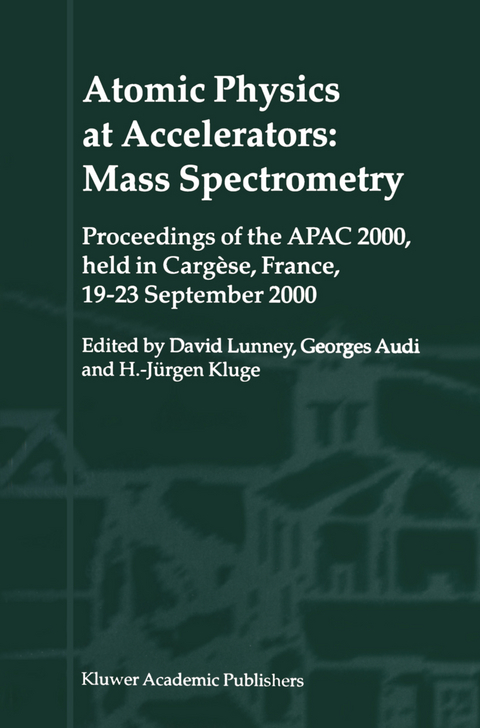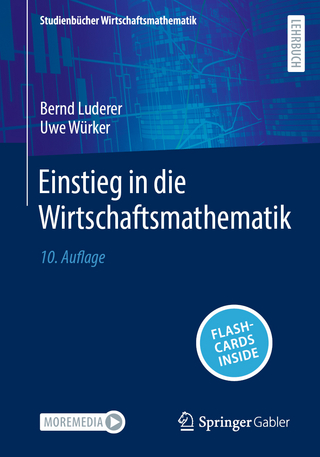
Atomic Physics at Accelerators: Mass Spectrometry
Springer (Verlag)
978-90-481-5825-6 (ISBN)
Foreword - organizing APAC2000; D. Lunney. Tutorial on Aspects of Atomic Masses (in honor of the 78th birthday of Aaldert Wapstra). The evaluation of atomic masses; G. Audi. Experimental overview of mass measurements; A. Lépine-Szily. The quest for a microscopic nuclear mass formula; J.M. Pearson. Effects of QED and beyond from the atomic binding energy; G. Soff, et al. Nuclear masses and the r- and p-processes of nucleosynthesis; S. Goriely. Standard-model tests with superallowed beta decay: an important application of very precise mass measurements; J.C. Hardy, I.S. Towner. Memories of mass determinations; A.H. Wapstra. Mass Measurements and Nuclear Structure. Masses and proton separation energies obtained from Qalpha and Qrho measurements; C.N. Davids, et al. Anomalies in the alphadecay energies and half lives of neutron-deficient Po isotopes; M. Huyse, et al. Shape coexistence and the N=28 shell closure far from stability; F. Sarazin, et al. Decay experiments on N ' Z nuclei: the role of masses Q values and separation energies; E. Roeckl. Mass Measurements for Metrology. Ultra-precise mass measurements using the UW-PTMS; R.S. Van Dyck Jr., et al. Precise measurements on the masses of Cs, Rb and Na: a new route to the fine structure constant; S. Rainville, et al. Prompt (n.gamma) mass measurements for the AVOGADRO project; A. Paul, et al. Precision measurement of the charged pion mass by high resolution x-ray spectroscopy; G.L. Borchert, et al. A possible new value for the electron mass from g-factor measurements on hydrogen-like ions; G. Werth, et al. On-Line IonTrap Mass Measurement Programs. ISOLTRAP mass measurements &endash; an overview; G. Bollen. The Canadian Penning Trap spectrometer at Argonne; G. Savard, et al. New massmeasurements using highly charged ions at SMILETRAP; T. Fritioff, et al. On-Line Mass Programs. The SPEG mass measurement program at GANIL; H. Savajols. Mass measurements at the Wright nuclear structure laboratory; D.S. Brenner. Mass measurements in nuclear reactions; Y.E. Penionzhkevich. On-Line Mass Programs Using Circulating Ions. Mass measurements at GANIL using the CSS2 and CIME cyclotrons; M. Chartier, et al. Schottky Mass Measurements of cooled exotic nuclei; Yu.A. Litvinov, et al. Isochronous mass measurements of hot exotic nuclei; M. Hausmann, et al. Recent results on Ne and Mg from the MISTRAL mass program at ISOLDE; D. Lunney, et al. Recent Mass Measurements for Nuclea Physics. Towards shorter-lived nuclides in ISOLTRAP mass measurements; F. Herfurth, et al. Mass Measurement of Exotic Nuclei Around N = Z = 40 With CSS2; A.-S. Lalleman, et al. Determination of Atomic Masses and Nuclear Binding Energies via Neutron Induced Reactions; C. Wagemans, et al. Mass Measurements of 114-124,130Xe With the Isoltrap Penning Trap Spectrometer; J. Dilling, et al. Accurate mass determination of neutron-deficient nuclides close to Z=82 with ISOLTRAP; S. Schwarz, et al. Atomic Theory. QED effects in heavy few-electron ions; V.M. Shabaev, et al. Relativistic calculations for trapped ions; P. Indelicato, et al. Parity nonconserving radiative corrections in the highly-charged ions; I. Bednyakov, et al. Vacuum polarization scr
| Erscheint lt. Verlag | 28.12.2011 |
|---|---|
| Zusatzinfo | 5 Illustrations, color; 159 Illustrations, black and white; 556 p. 164 illus., 5 illus. in color. |
| Verlagsort | Dordrecht |
| Sprache | englisch |
| Maße | 155 x 235 mm |
| Themenwelt | Mathematik / Informatik ► Mathematik ► Angewandte Mathematik |
| Naturwissenschaften ► Physik / Astronomie ► Atom- / Kern- / Molekularphysik | |
| Naturwissenschaften ► Physik / Astronomie ► Plasmaphysik | |
| ISBN-10 | 90-481-5825-7 / 9048158257 |
| ISBN-13 | 978-90-481-5825-6 / 9789048158256 |
| Zustand | Neuware |
| Haben Sie eine Frage zum Produkt? |
aus dem Bereich


